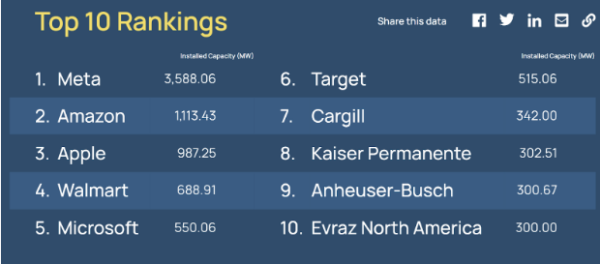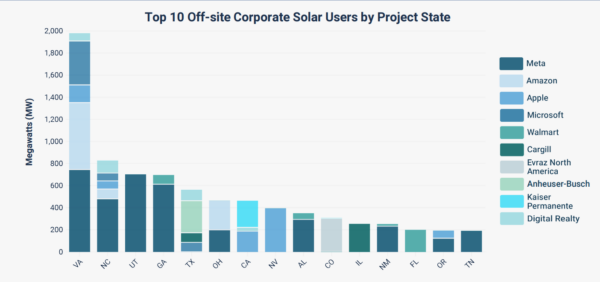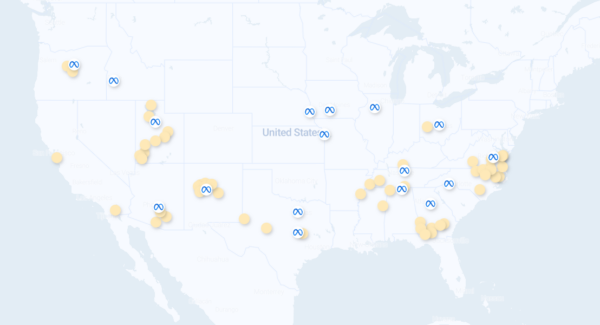Meta, the social media giant behind Facebook and Instagram, is focused on renewable energy deployments, which are currently expanding at an impressive 30% compound annual growth rate. Urvi Parekh, director of renewable energy, discussed the company’s clean energy initiatives at the Solar Energy Industry Association’s Finance, Tax and Buyers Seminar held in New York.
At present, Meta stands as the largest commercial and industrial purchaser of solar power in the U.S., boasting close to 3.6 GW of installed solar capacity. Parekh also revealed that the company has over 9 GW of capacity awaiting development over the coming years.
One of Meta’s procurement strategies concerns the siting of new data centers. The company clarified that they do not necessarily own these data centers but they incorporate an “emissions first” rationale into their process, making inquiries with suppliers and aiming for local sourcing wherever feasible. When selecting a data center site, a key factor influencing the major electricity buyer’s decision is the ability to collaborate with the local utility.

Image: SEIA

Image: SEIA
Parekh highlighted the company’s success in partnering with utilities in the southeastern U.S., specifically recent collaborations with the Tennessee Valley Authority, Alabama Power and Walton EMC. As Meta selects data center locations, it communicates with utilities to ensure that cleaner electricity sources, namely solar, power the facilities.
In December, Meta announced 720 MW of solar power projects in development with Silicon Ranch, a Nashville-based developer backed by Shell New Energies, Manulife, TD Greystone Infrastructure and Mountain Group Partners.
The company has begun to approach utilities earlier in the development process, as they have historically struggled to purchase clean electricity sources in certain states. Parekh shared one of Meta’s key lessons: obtaining custom renewable energy tariffs from these groups is not an overnight process, often requiring up to 18 months to finalize details.

Image: Meta
Meta has set an ambitious net-zero goal for 2030 and is currently experiencing significant growth in clean energy. However, the company observed a slowdown in projects entering the queue since the passage of the Inflation Reduction Act. Like others, Meta eagerly awaits guidance and clarification from the Internal Revenue Service and the Treasury Department on IRA adders and tax incentives.
The company is considering involvement in two additional areas: energy storage and power transmission and distribution system upgrades. Meta’s relatively flat demand curves suggest that energy storage, which is predominantly in the peak demand and demand charge management phase of deployment, is not yet economically viable.
A utility in the western region and Alabama have expressed interest in exploring peak power shifting opportunities, Parekh said.
This content is protected by copyright and may not be reused. If you want to cooperate with us and would like to reuse some of our content, please contact: editors@pv-magazine.com.









By submitting this form you agree to pv magazine using your data for the purposes of publishing your comment.
Your personal data will only be disclosed or otherwise transmitted to third parties for the purposes of spam filtering or if this is necessary for technical maintenance of the website. Any other transfer to third parties will not take place unless this is justified on the basis of applicable data protection regulations or if pv magazine is legally obliged to do so.
You may revoke this consent at any time with effect for the future, in which case your personal data will be deleted immediately. Otherwise, your data will be deleted if pv magazine has processed your request or the purpose of data storage is fulfilled.
Further information on data privacy can be found in our Data Protection Policy.